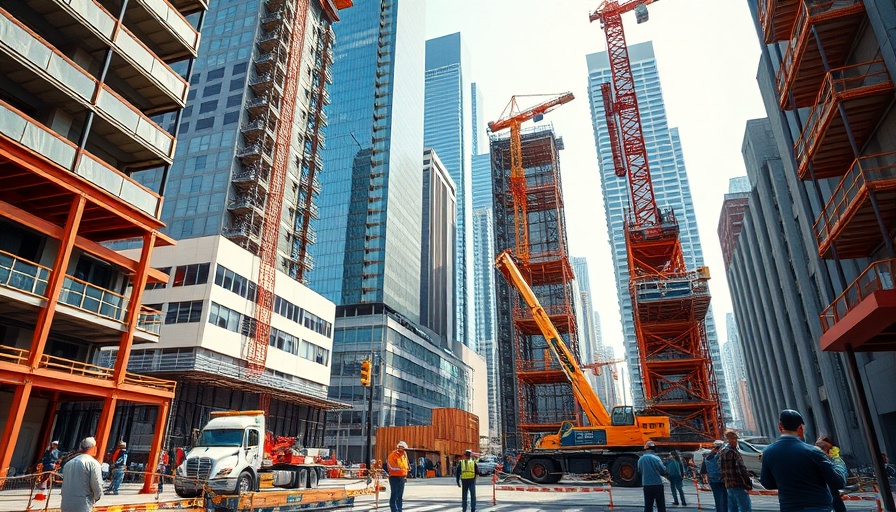
The Surge in Material Costs: Understanding the Risks
With steel and aluminum prices soaring in recent months, the construction industry is bracing for a significant restructuring of material costs. As often happens, the threat of new tariffs set to take effect on April 2 is sending shockwaves through the market. According to Steve Stouthamer, vice president of project planning for Skanska USA Building, materials critically affected include rebar, structural steel, aluminum products, and piping used in crucial systems.
Foreseeing Price Volatility from Tariffs
Tariffs, especially those targeting imports from Canada and Mexico, can unleash immediate effects on construction budgets. Just the anticipation of these tariffs has led to increased prices and a scramble among contractors to secure essential materials before costs escalate further. Stouthamer points out that reinforcing steel, which is vital for concrete structures, will likely see substantial price volatility, thereby affecting project timelines and costs.
Strategies for Mitigating Financial Exposure
To navigate the unpredictable landscape, construction companies must adopt proactive strategies. Stouthamer suggests that businesses proactively secure contracts and review supply chains to minimize impacts. This can involve locking in prices with local suppliers ahead of tariff enforcement, creating buffer stock, and engaging in collaborative discussions with regular construction partners to ensure stability amid changing market conditions.
The Broader Economic Context
This looming tariff threat isn't just a momentary blip; it reflects broader economic pressures in the construction sector. In recent years, publicly traded constructors have faced increasing challenges from fluctuating material costs, which can deter investors. As tariffs come into play, only companies that adjust their procurement strategies can maintain competitiveness and protect their profit margins.
Local and Global Implications
The upcoming tariffs could also signal a shift in how construction businesses operate on a global scale. Companies may need to pivot to more localized sourcing in order to mitigate risk. This leads to a complex interplay of local economies trying to manage their resources effectively while complying with the evolving economic landscape imposed by larger global trade policies.
In conclusion, understanding the potential impact of tariffs on construction materials is critical for businesses looking to maintain project efficiency and cost management. The construction industry must adapt to these outside influences, making informed decisions to mitigate risks. It's imperative for companies to stay vigilant and agile in this uncertain environment.
 Add Row
Add Row  Add
Add 




 Add Row
Add Row  Add
Add 

Write A Comment